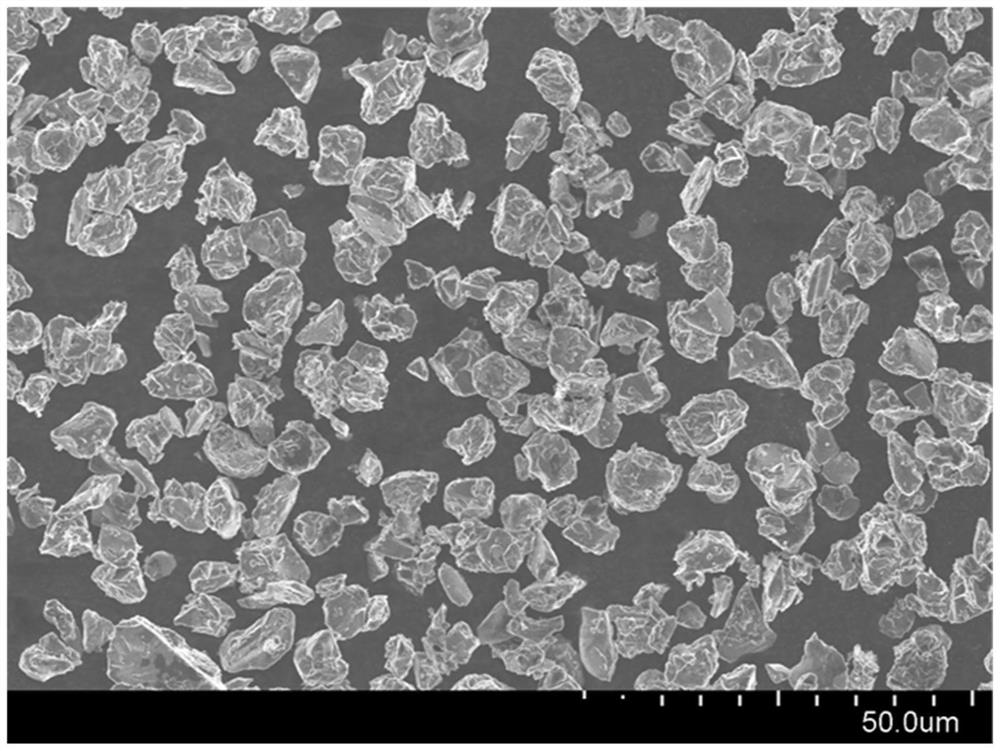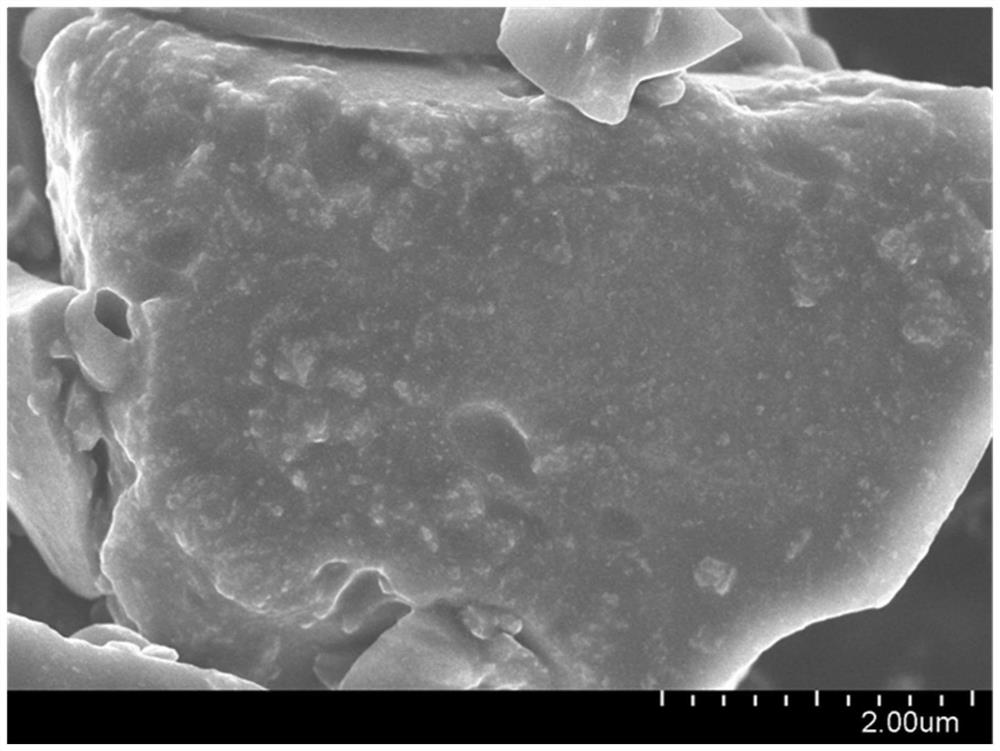Double-layer carbon-coated silicon-based composite material, preparation method and application thereof
A silicon-based composite material and coating technology, applied in nanotechnology for materials and surface science, active material electrodes, nanotechnology, etc., can solve the problems of complex and dangerous preparation processes, incompatibility, and low Coulombic efficiency, and achieve Improve the first Coulombic efficiency, reduce irreversible loss, and small volume effect
- Summary
- Abstract
- Description
- Claims
- Application Information
AI Technical Summary
Problems solved by technology
Method used
Image
Examples
Embodiment 1
[0056] Mix 1000g of silicon-oxygen compound particles with a median particle size of 5 μm (the atomic ratio of silicon to oxygen is 1:1), and 62.5g of coal tar pitch powder in the coating tank, and then heat the coating tank to 300°C and keep Stir at constant temperature for 3 hours to obtain a silicon oxide compound material coated with coal tar pitch. The above-mentioned materials were heated to 800° C. under a nitrogen atmosphere and kept for 10 hours to carbonize the coal tar pitch, and at the same time, the disproportionation reaction of the silicon oxide occurred. The material obtained after cooling is crushed and passed through a 500-mesh sieve to obtain silicon oxide powder coated with the first layer of carbon film.
[0057] In a drying room with a relative humidity lower than 30%, use a planetary ball mill to crush the lithium hydride coarse powder and pass it through a 600-mesh sieve to obtain a lithium hydride fine powder with a maximum particle size of about 23 μm...
Embodiment 2
[0064] Compared with Example 1, the silicon oxide particle-coated carbon film process in Example 2 is completed by chemical vapor deposition, using acetylene as a carbon precursor at 950° C. for 2 hours. The material obtained after cooling is crushed and passed through a 500-mesh sieve to obtain silicon oxide powder coated with the first layer of carbon film.
[0065] In a drying room with a relative humidity lower than 30%, use a planetary ball mill to crush the lithium hydride coarse powder and pass it through a 600-mesh sieve to obtain a lithium hydride fine powder with a maximum particle size of about 23 μm. Take 50 g of lithium hydride fine powder with a maximum particle size equal to about 23 μm after sieving, and mix it with 500 g of the carbon film-coated silicon oxide powder in a VC mixer at high speed for 20 minutes. Put the above mixed powder into a tube furnace, do lithium doping and doping heat treatment in an argon atmosphere, raise the temperature to 700°C and k...
Embodiment 3
[0068] Mix 1000g of silicon oxide compound particles with a median particle size of 3μm (atomic ratio of silicon to oxygen is 1:1), and 25g of petroleum asphalt powder in the coating tank, and then heat the coating tank to 300°C and keep it at a constant temperature Stir for 3 hours to obtain a silicon oxide compound material coated with coal tar pitch. The above materials were heated to 1100° C. under a nitrogen atmosphere and kept for 2 hours to carbonize the petroleum pitch, and at the same time, the disproportionation reaction of the silicon oxide occurred. The material obtained after cooling is crushed and passed through a 500-mesh sieve to obtain silicon oxide powder coated with the first layer of carbon film.
[0069] In a drying room with a relative humidity lower than 30%, use a planetary ball mill to crush the lithium hydride coarse powder and pass it through a 600-mesh sieve to obtain a lithium hydride fine powder with a maximum particle size of about 23 μm. Take 5...
PUM
| Property | Measurement | Unit |
|---|---|---|
| size | aaaaa | aaaaa |
| particle size | aaaaa | aaaaa |
| size | aaaaa | aaaaa |
Abstract
Description
Claims
Application Information
 Login to View More
Login to View More - R&D
- Intellectual Property
- Life Sciences
- Materials
- Tech Scout
- Unparalleled Data Quality
- Higher Quality Content
- 60% Fewer Hallucinations
Browse by: Latest US Patents, China's latest patents, Technical Efficacy Thesaurus, Application Domain, Technology Topic, Popular Technical Reports.
© 2025 PatSnap. All rights reserved.Legal|Privacy policy|Modern Slavery Act Transparency Statement|Sitemap|About US| Contact US: help@patsnap.com


